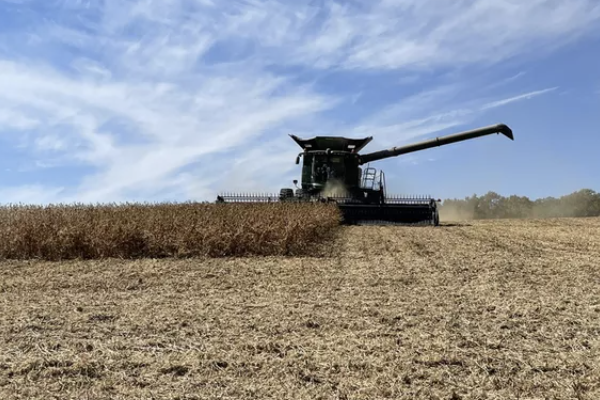The latest U.S. Drought Monitor maps reveal a small but encouraging decrease in dry conditions across the United States.
Although improvement varies by region, nationwide drought coverage has edged down as autumn precipitation brings needed moisture to key agricultural areas.
National Overview
Recent data from the U.S. Drought Monitor shows about 72% of the country is currently classified as abnormally dry or worse, down from 74% a week ago. Roughly one-fifth of the U.S. remains in severe or extreme drought — an incremental but positive shift.
This slow progress reflects uneven fall weather, with some regions benefiting from frequent rainfall while others remain moisture-starved. Farmers are seeing localized relief, but many areas still need steady precipitation to rebuild soil moisture and pasture quality.
Midwest Sees Widespread Rainfall
The Midwest saw one of the most notable improvements on this week’s drought maps. Moderate to heavy rainfall brought relief to Michigan’s Lower Peninsula and the Ohio Valley.
In Wisconsin, cooler, wetter conditions replaced recent warm spells. Rainfall in Illinois and Indiana ranged from half an inch to over three inches, offering relief to dry fields and pastures.
Regional severe drought declined from more than 14.5% on the Oct. 14 map to under 10% this week — signaling steady improvement as drought retreated to smaller pockets in southwestern Missouri, east-central Illinois, and parts of Indiana and Ohio.
High Plains Experience Uneven Precipitation
Rainfall was inconsistent across the High Plains. Northern and western areas of the Dakotas and Wyoming saw one to three inches of rain, while much of Nebraska and Kansas stayed dry.
Early-week rain in Nebraska briefly paused fieldwork, but brisk winds helped dry conditions quickly. Cooler temperatures also marked a return to more typical fall weather.
Overall dryness in the High Plains dipped slightly to just over 36%, while extreme drought fell from 3.3% to under 1.7%.
Why These Results Matter for Producers
This week’s updates mark a turning point for many farmers wrapping up harvest and planning for spring. Midwest rainfall may help replenish subsoil moisture before winter, supporting early 2026 crop growth.
Meanwhile, ongoing dryness in many areas of the High Plains continues to challenge fall cover crop establishment and soil moisture retention.
These trends underscore the need for flexible planning. Producers in recovering regions can expect short-term gains, while those in persistently dry zones should continue monitoring soil and adjusting management practices.
Looking Ahead Through Drought Monitor Maps
As fall continues, recent gains offer cautious optimism. Sustained rainfall will be key to maintaining soil moisture and supporting next season’s outlook. Weekly drought monitor maps help producers stay informed and adapt field management accordingly.
To prepare for the next stretch of the season, reach out to your local John Deere dealer for tools and equipment that help you stay efficient through changing field conditions.
